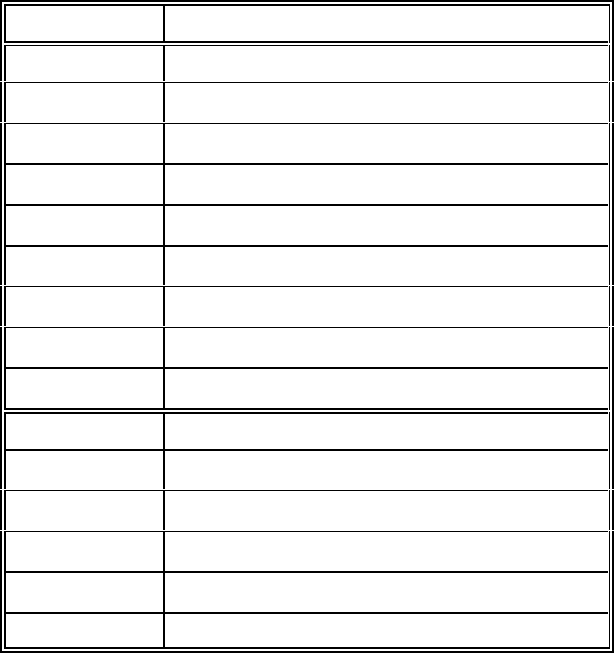
P300H P300 Series Modem Installation and Operating Handbook Page 188
Backward Alarms
Pin Number Description
1 BA 1-4 Common
2 BA1 N/O
18 BA1 N/C
3 BA2 N/O
19 BA2 N/C
4 BA3 N/O
20 BA3 N/C
5 BA4 N/O
21 BA4 N/C
22 BA1 Input
23 BA2 Input
24 BA3 Input
25 BA4 Input
7 Rx Summary fault output (link to BA in)
6 Ground
N/O indicates normal open in the normal, non-alarm state & N/C normally closed in the non-alarm state.
Unlike the modem fault relays, the backward alarms are not normally energised, and fall back to the
`Normal` state when modem power is removed. The modem deferred alarm acts as a summary backward
alarm and activates when any backward alarm is received (this does fall back to the `Fail` state when power
is removed).
Backward alarm inputs float to the `Good` state (high =+5V) and indicate `Fail` when connected to 0V. The
Rx summary fault is an open collector output, 0V = Fail, open collector=OK. From the front panel the
backward alarm inputs (BA x)can be set as follows (E=Ext, A=Auto-Rx fail, O=OK):
Menu Opt BA 1 BA 2 BA 3 BA 4
Mode 1 EEEE Ext patch Ext patch Ext patch Ext patch
Mode 2 AEEE Rx Fail Ext patch Ext patch Ext patch
Mode 3 AOOO Rx Fail Good Good Good
Mode 4 AAAA Rx Fail Rx Fail Rx Fail Rx Fail
If external patching is required, connect the Rx summary fault to the required BA input and any other
modem fail outputs to the appropriate other BA inputs. Leave unused inputs floating.
In IDR modes these are used for the 4 standard IDR backward alarms.
In IBS modes BA 1 indicates the normal single IBS backward alarm status (mirrored by the unit deferred
alarm). For multidestinational IBS carriers it is possible to operate the P300 in IBS mode, but use 4
separate backward alarms as per IDR. From the front panel select Service as `Other`, based on `IBS`, and
follow the screen prompts.


















